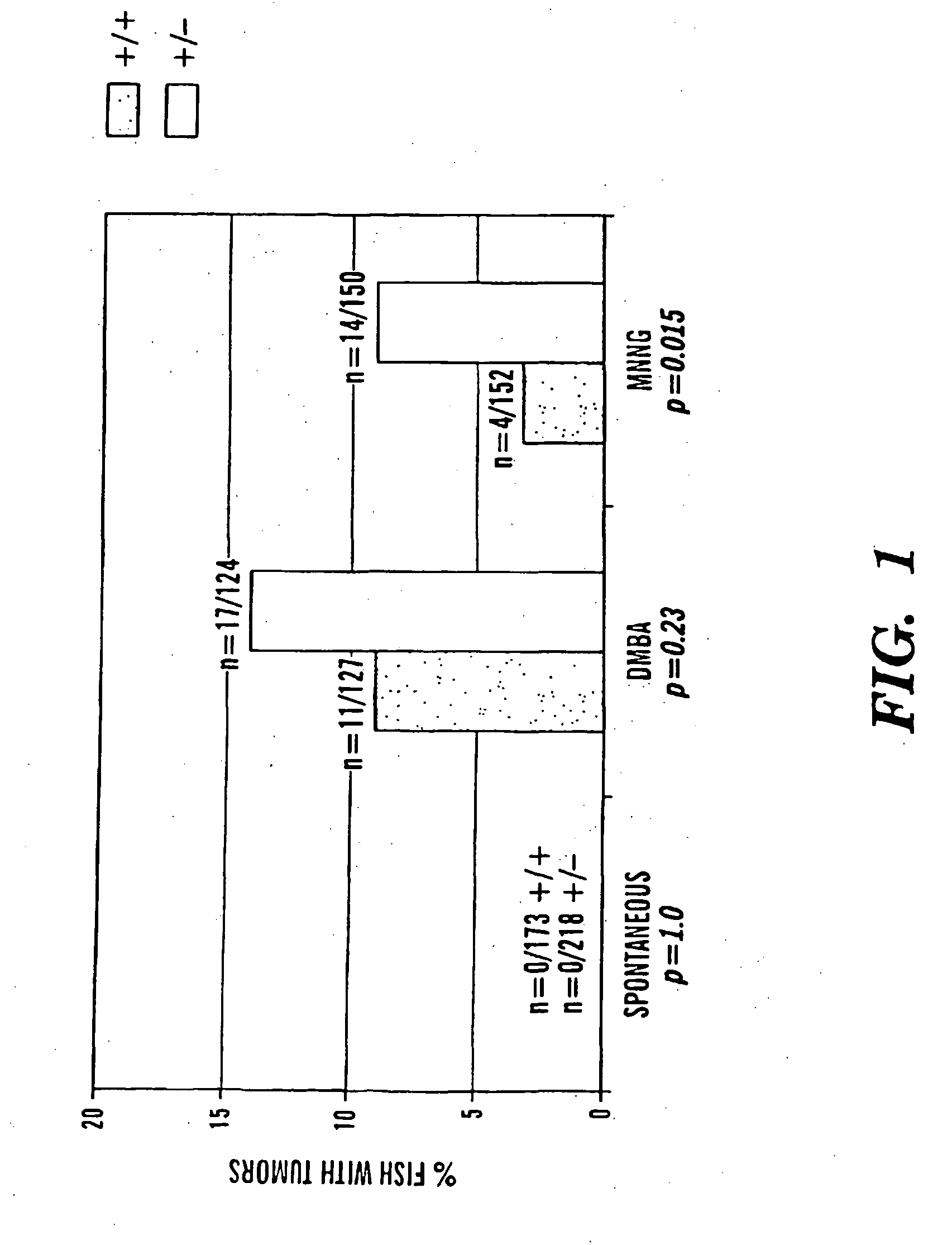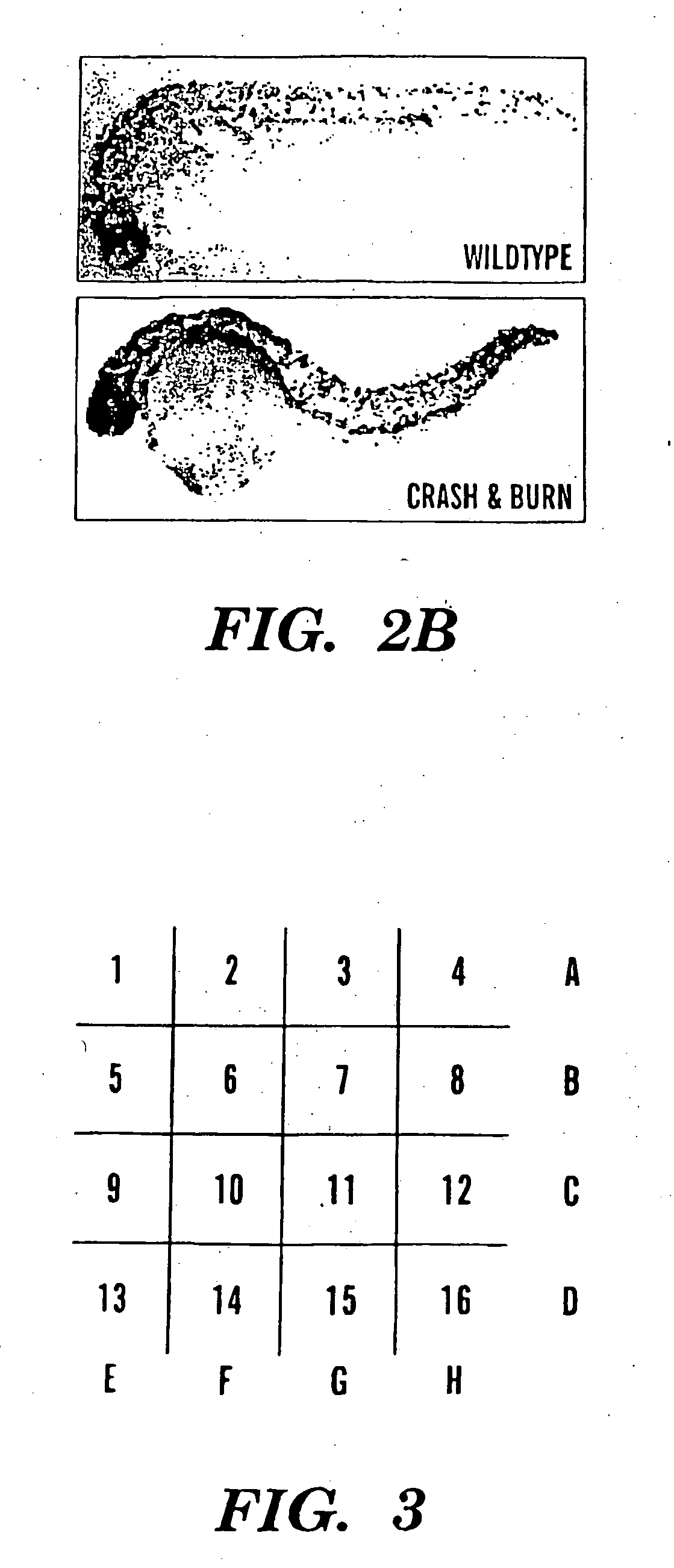Method of screening compounds
a compound and compound technology, applied in the field of compound screening, can solve the problems of high cost and inefficacy, flawed traditional approach, and difficult forward genetic screening for recessive mutations in mice, and achieve the effect of altering the phenotyp
- Summary
- Abstract
- Description
- Claims
- Application Information
AI Technical Summary
Benefits of technology
Problems solved by technology
Method used
Image
Examples
examples
[0155] The Zebrafish Cell Cycle: The basic molecular machinery of the cell cycle is well conserved through evolution—so much so that yeast have been a good model for the mammalian cell cycle. Some of the cell cycle machinery in zebrafish has been shown to be homologous to mammalian systems. For example, cyclin D1 has been cloned in zebrafish and its amino acid sequence is 77% identical to the human homologue. Yarden, A., D. Salomon, and B. Geiger, Zebrafish cyclin D1 is differentially expressed during early embryogenesis. Biochim. Biophys. Acta 1264, 257-60 (1995). Within the cyclin box region (a feature of G1 cyclins), the homology is even more striking—88% identitical. There are also numerous expressed sequence tags (EST's) of cell cycle genes present in the zebrafish database at Washington University, St. Louis, Mo.
[0156] The zebrafish embryonic cell cycle exhibits similarities to the Xenopus and Drosophila cell cycle. Zebrafish embryos begin dividing synchronously and rapidly (...
PUM
| Property | Measurement | Unit |
|---|---|---|
| Defects | aaaaa | aaaaa |
Abstract
Description
Claims
Application Information
 Login to View More
Login to View More - R&D
- Intellectual Property
- Life Sciences
- Materials
- Tech Scout
- Unparalleled Data Quality
- Higher Quality Content
- 60% Fewer Hallucinations
Browse by: Latest US Patents, China's latest patents, Technical Efficacy Thesaurus, Application Domain, Technology Topic, Popular Technical Reports.
© 2025 PatSnap. All rights reserved.Legal|Privacy policy|Modern Slavery Act Transparency Statement|Sitemap|About US| Contact US: help@patsnap.com



